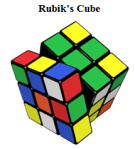In a recent leadership study on innovation by Capgemini Consulting, one of the study’s top-line concerns was the lack of a well-articulated innovation strategy, and then beyond this, a lack of organizational understanding of the linkages required.
It is amazing how many organizations lack a clear innovation vision and an explicit set of statements from the Chief Executive or their designated C-Level Officer on innovation.
One great visual paints a thousand words
This visual I came across some years back, and for me, it is outstanding in providing the feedback loops that go into developing the right innovation vision.
To get to a definitive endpoint of having an innovation vision you are faced with some complex challenges. These are well shown here. Continue reading “The essential innovation vision”

